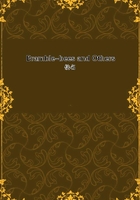
第45章 INSTINCT AND DISCERNMENT.(4)
We must not forget the reed, which is highly appreciated when--a rare find--it appears under the requisite conditions. In its natural state, the plant with the mighty hollow cylinders is of no possible use to the Osmia, who knows nothing of the art of perforating a woody wall. The gallery of an internode has to be wide open before the insect can take possession of it. Also, the clean-cut stump must be horizontal, otherwise the rain would soften the fragile edifice of clay and soon lay it low; also, the stump must not be lying on the ground and must be kept at some distance from the dampness of the soil. We see therefore that, without the intervention of man, involuntary in the vast majority of cases and deliberate only on the experimenter's part, the Osmia would hardly ever find a reed-stump suited to the installation of her family. It is to her a casual acquisition, a home unknown to her race before men took it into their heads to cut reeds and make them into hurdles for drying figs in the sun.
How did the work of man's pruning-knife bring about the abandonment of the natural lodging? How was the spiral staircase of the Snail-shell replaced by the cylindrical gallery of the reed? Was the change from one kind of house to another effected by gradual transitions, by attempts made, abandoned, resumed, becoming more and more definite in their results as generation succeeded generation? Or did the Osmia, finding the cut reed that answered her requirements, instal herself there straightway, scorning her ancient dwelling, the Snail-shell?
These questions called for a reply; and they have received one. Let us describe how things happened.
Near Serignan are some great quarries of coarse limestone, characteristic of the miocene formation of the Rhone valley. These have been worked for many generations. The ancient public buildings of Orange, notably the colossal frontage of the theatre whither all the intellectual world once flocked to hear Sophocles' "Oedipus Tyrannus," derive most of their material from these quarries. Other evidence confirms what the similarity of the hewn stone tells us.
Among the rubbish that fills up the spaces between the tiers of seats, they occasionally discover the Marseilles obol, a bit of silver stamped with the four-spoked wheel, or a few bronze coins bearing the effigy of Augustus or Tiberius. Scattered also here and there among the monuments of antiquity are heaps of refuse, accumulations of broken stones in which various Hymenoptera, including the Three-horned Osmia in particular, take possession of the dead Snail-shell.
The quarries form part of an extensive plateau which is so arid as to be nearly deserted. In these conditions, the Osmia, at all times faithful to her birth-place, has little or no need to emigrate from her heap of stones and leave the shell for another dwelling which she would have to go and seek at a distance. Since there are heaps of stone there, she probably has no other dwelling than the Snail-shell.
Nothing tells us that the present-day generations are not descended in the direct line from the generations contemporary with the quarryman who lost his as or his obol at this spot. All the circumstances seem to point to it: the Osmia of the quarries is an inveterate user of Snail-shells; so far as heredity is concerned, she knows nothing whatever of reeds. Well, we must place her in the presence of these new lodgings.